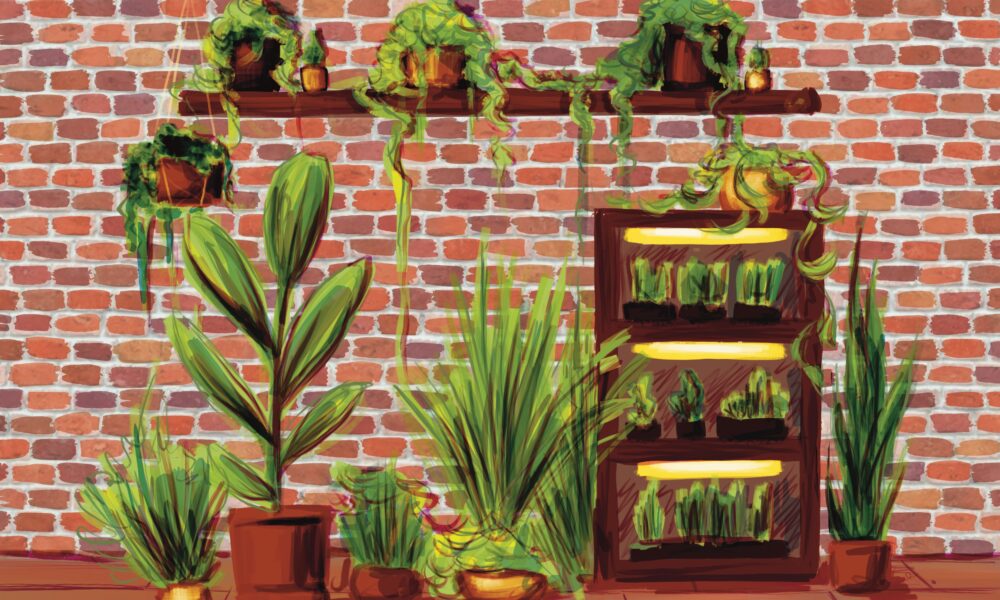There’s no doubt that the change in seasons affects many of us. With the days getting shorter and trees getting barer, the absence of luscious greenery from summer days can leave a leaf-shaped hole in your heart. But fear not: You can keep those good vibes going from the comfort of your own home. Indoor plants offer many health benefits, including stress relief, mental health boosts, and air quality improvements.
Taking care of houseplants doesn’t have to be a daunting task. As someone who has acquired a reasonable amount of knowledge from years of trial and error, here are some plant care tips that have worked for me.
It’s okay if your plant dies
Perhaps the most important piece of advice I can offer you is that it’s okay if your plant wilts and shrivels. This doesn’t mean you’re a bad plant parent, or that you’re doing something wrong! Some plants are harder to take care of than others—there’s something about cacti and succulents that I’ll never understand. Sometimes, choosing less care-intensive plants is the solution. My personal favourites are snake plants and pothos: The latter, in particular, will literally never stop growing, while the former seems to thrive on neglect.
Plants need to stretch their legs too
Staying active and moving around is important, even when the weather isn’t being cooperative. Just like you, your plants need their space to thrive. Sometimes, if a plant isn’t doing well, it might be because your pot is too small. This is especially common for older plants whose root networks have expanded over the years. So, treat that plant you’ve had in the corner of your room for years to a new pot and some fresh soil. Not only will this provide it with more nutrients and space to expand its roots, but getting your hands in some dirt might be more therapeutic than you think.
Know when your plants are thirsty
The indoor conditions of your home aren’t always the same as the ones at the plant nursery. Your room might be drier, or the soil might have changed from the time you got your plant, especially if you repotted it. Regardless of what it says on your plant’s care sheet, there’s no universal guide to watering plants, but a helpful rule of (green) thumb is checking the topsoil with your finger: If it feels dry, give it a good gulp of water, and take this opportunity to ask yourself when you last had one, too. Tropical plants also love a good misting every once in a while. Test out different misting frequencies and see which one your leafy friend thrives under.
Learning to let go of brown leaves
You’ve had your plant for years and it’s been with you through the ups and downs of life, or maybe you just got it and you simply can’t accept that its leaves are already falling out. That’s valid. But as hard as it may seem, you need to take your shears out and start pruning. Cutting off dead leaves will allow your plant to both grow fuller and look nicer. You can also choose to remove good branches or leaves and propagate them, allowing your plant to grow in a more balanced way (and the clippings make great gifts to friends).







